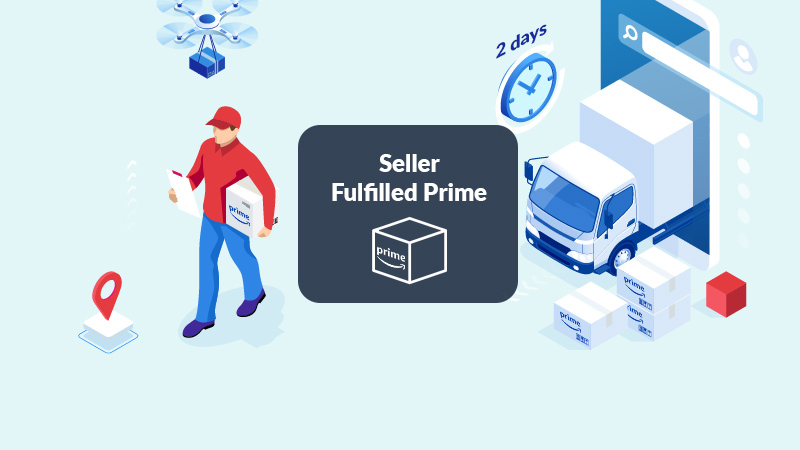In recent years, the e-commerce industry has experienced rapid growth, with more and more consumers opting to shop online rather than in physical stores. This has created a huge demand for fast, reliable delivery of goods, leading to the rise of fulfillment services such as Amazon Prime.
Amazon Prime is a subscription-based service that offers members free two-day shipping on eligible items, as well as access to a range of other benefits such as streaming of music, videos, and e-books. For online retailers, the ability to offer Prime shipping can be a key differentiator, providing a competitive edge and increasing customer loyalty.
However, not all online retailers can participate in the Amazon Prime program. To be eligible, sellers must use Amazon’s fulfillment service (Fulfillment by Amazon, or FBA) to store and ship their products. This can be a drawback for some sellers, as it involves ceding control of their inventory and shipping processes to Amazon, and incurs additional fees.
Enter Seller Fulfilled Prime (SFP), an alternative that allows eligible sellers to offer Prime shipping to their customers without using FBA. Instead, these sellers fulfill orders themselves, using their own warehouses, shipping processes, and carrier contracts. In this article, we will explore the benefits and drawbacks of SFP, and provide guidance on how to get started as a seller fulfilled Prime merchant.
Benefits of Seller Fulfilled Prime
Increased control: By fulfilling orders themselves, sellers have complete control over their inventory and shipping processes. This can help to reduce the risk of stockouts, and allow for more flexible and cost-effective shipping options.
Reduced costs: FBA fees can be a significant burden for some sellers, particularly those with low-margin products or high storage costs. By opting for SFP, sellers can reduce their fulfillment costs and improve their bottom line.
Improved customer experience: The ability to offer fast, reliable shipping can be a key differentiator for online retailers. By fulfilling Prime orders themselves, sellers can ensure that their customers receive their orders on time and in good condition, helping to build customer loyalty and repeat business.
Increased sales: By offering Prime shipping, sellers can tap into the huge market of Amazon Prime members, who are known to shop more frequently and spend more than non-Prime customers. This can help to increase sales and drive revenue growth.
Drawbacks of Seller Fulfilled Prime
- Increased operational complexity: Fulfilling orders yourself involves a greater degree of operational complexity, as sellers must manage their own inventory and shipping processes. This can be a challenge for some retailers, particularly those with limited resources or experience.
- Higher shipping costs: While SFP can reduce fulfillment costs, it may also increase shipping costs, as sellers must use their own carrier contracts and pay for shipping themselves. This can be a significant challenge for sellers with low-margin products or high shipping costs.
- Decreased customer experience: While the ability to offer Prime shipping can be a key differentiator, it also raises the bar for customer expectations. Sellers must ensure that their shipping processes are fast, reliable, and consistent, or risk damaging their reputation and losing customers.
- Strict eligibility criteria: To be eligible for SFP, sellers must meet strict criteria set by Amazon, including high performance standards and a minimum of 100 Prime-eligible items. This can be a challenge for some sellers, particularly those with limited product offerings or poor performance records.
Getting Started with Seller Fulfilled Prime
Evaluate eligibility: First and foremost, sellers must determine if they meet Amazon’s eligibility criteria for SFP. This includes meeting high performance standards, having a minimum of 100 Prime-eligible items, and providing accurate and timely shipping information to customers.
Develop a fulfillment strategy: Next, sellers must develop a fulfillment strategy that ensures fast, reliable delivery of Prime orders. This includes setting up a secure and well-organized warehouse, negotiating favorable shipping contracts with carriers, and implementing efficient order fulfillment processes.
Optimize product listings: To be eligible for Prime, products must be listed as Prime-eligible on Amazon. Sellers must ensure that their product listings are optimized, with clear and accurate descriptions, competitive prices, and high-quality images.
Monitor performance: To maintain their SFP status, sellers must continuously monitor their performance and ensure that they are meeting Amazon’s high standards for customer service and delivery times. This includes regularly monitoring customer feedback and making any necessary improvements to their fulfillment processes.
Consider fulfillment software: To streamline their fulfillment processes and reduce the risk of errors, sellers may choose to use fulfillment software. There are a number of solutions available, including order management systems, shipping software, and warehouse management systems.
Conclusion
Seller Fulfilled Prime is a valuable option for online retailers who want to offer Prime shipping without using FBA. By fulfilling orders themselves, sellers have increased control over their inventory and shipping processes, and can reduce their fulfillment costs. However, SFP also involves a greater degree of operational complexity and requires a high level of customer service and shipping reliability. To be successful, sellers must carefully evaluate their eligibility, develop a sound fulfillment strategy, and continuously monitor their performance. With careful planning and execution, SFP can be a valuable tool for driving sales and building customer loyalty.



